An Interview with Dale Roberts by Elizabeth Johnson, edited by Matthew Crain
November 2021
An Interview with Dale Roberts by Elizabeth Johnson, edited by Matthew Crain
November 2021
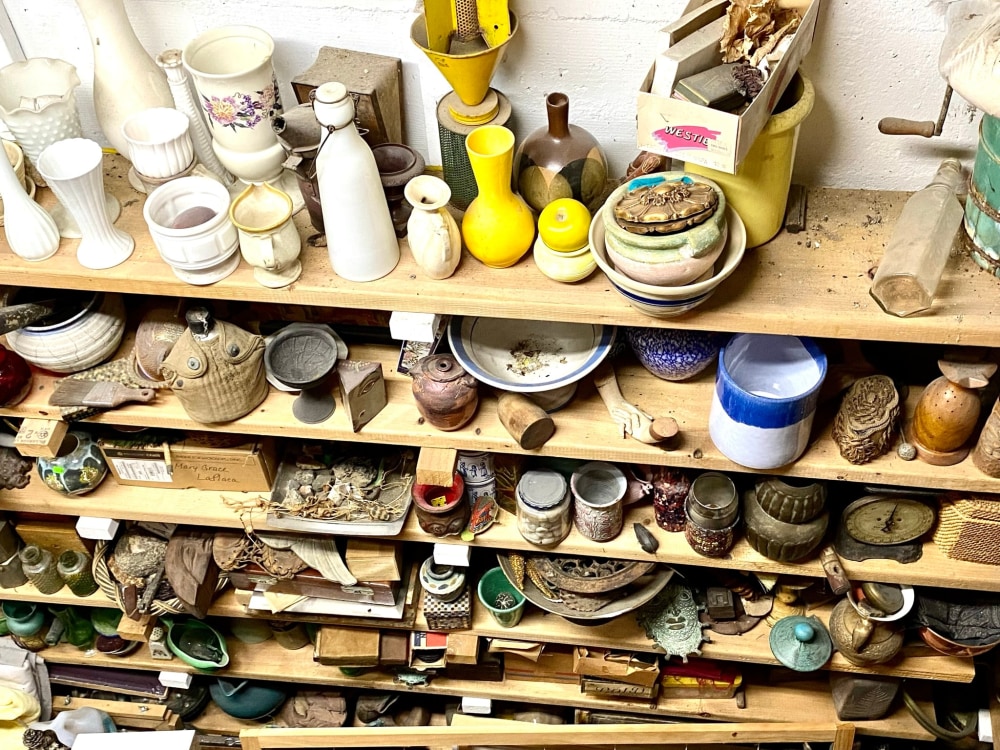
ART SYNC: THE SEEN AND THE UNSEEN
An interview with Dale Roberts
by Elizabeth Johnson, edited by Matthew Crain, 2021
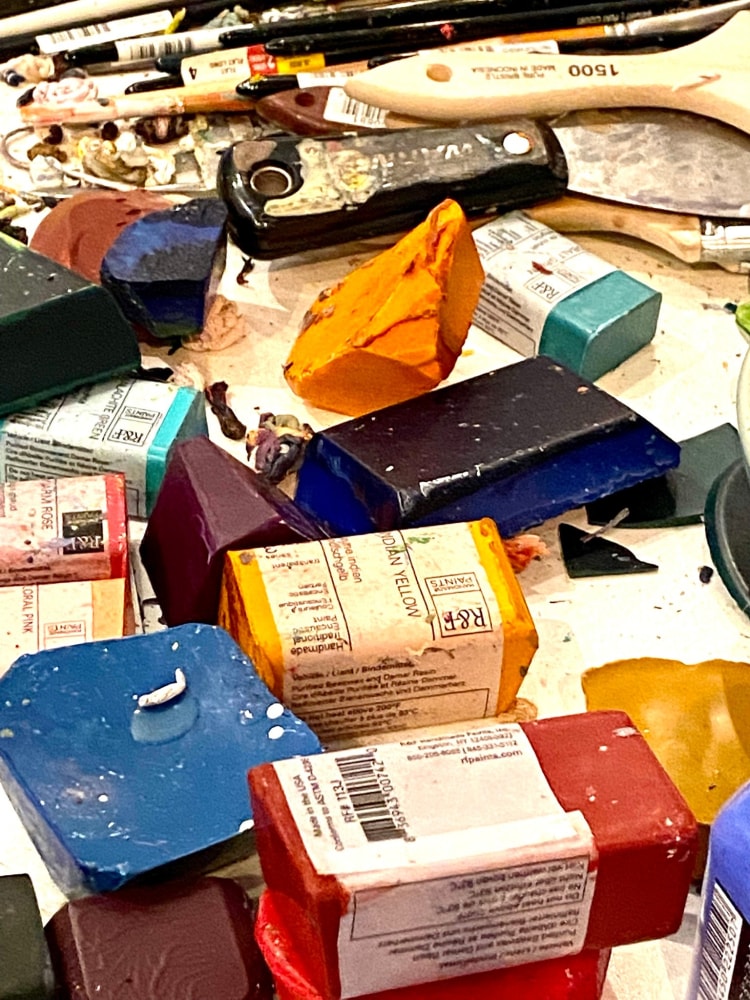
Encaustic paints in Roberts' studio
Elizabeth Johnson: You work in several difficult mediums: encaustic, casein, egg tempera, pastel, silverpoint, ink, and gouache. You mentioned that it took ten years to get the hang of encaustic––a big commitment. Is it still the most pleasurable medium?
Dale O. Roberts: Encaustic seems to possess the most unique character and range of possibilities. However, each medium has its own appeal. My fascination with ancient mediums began long ago when I was a sophomore in a graduate seminar on egg tempera.
EJ: I love The Last Judgement, your painting of the mosaic at St. Vitus Cathedral in Prague: it seems to use loose color to balance structure with impressionistic light. As you mention in John Thornton’s video, Dale Roberts: Family, Faith, Life, and Art (linked at bottom of page), it capitalizes on the compositional “spaces and inner spaces” that you like to paint. Were you thinking of Monet’s Rouen Cathedral series when you were working? And since you did the painting in encaustic, did the inherent fast drying time of wax limit your ability to vary gestural marks? Does working in wax involve chance more than other media?
DR: The Rouen Cathedral series did cross my mind as a precedent to avoid. What struck me as I encountered the St. Vitus façade was the struggle between light and darkness, between good and evil. I wanted to respond to that struggle. As for my procedure, I work with a heat source in my left hand and brushes and palette knife in my right hand to extend the working time and to allow for freer manipulation of the paint. Fusing multiple layers can be delightfully or maddeningly unpredictable. It’s at the heart of my method. I’ve reduced encaustic to three steps: apply, scrape, and heat. That simple framework opens a myriad of possibilities.
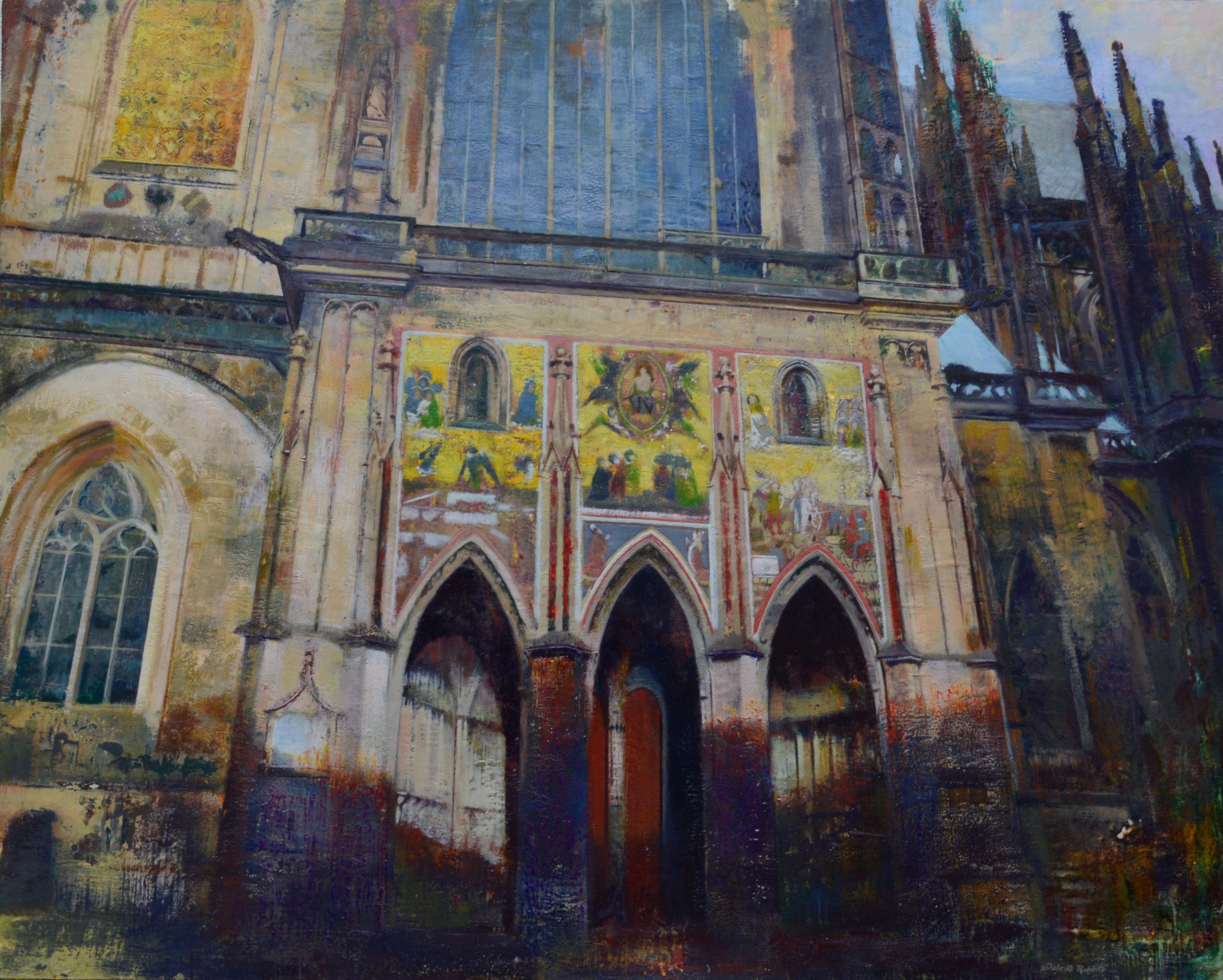
Prague (Message To The Proletariat), 48" x 60", Encaustic
EJ: You say that the Cathedral’s Christian imagery speaks across time, and mention that now more tourists than parishioners visit St. Vitus. Your layers of rugged, enduring wax mimic the accumulation of each generation's plans, delays, damage, fires, and disputes concerning the physical building. Is the history of St. Vitus Cathedral a metaphor for working in wax? If the cathedral metaphor is as open-ended as the encaustic process, how do you know when to stop working?
DR: Your understanding of the layers of wax as a metaphor to the history of St. Vitus is prescient. To me subject and media fused together in a mysterious and wonderful union are at the heart of the best paintings. Spiritual themes dear to me became the deeper meaning of my cathedral painting, and encaustic, with its inherent challenges, became a perfect metaphor for expressing those themes. To answer your question “How do you know when to stop working?”: paintings and themes occupy my mind for long stretches of time, and I revisit works years later, since encaustic allows that technical expansiveness. Just as the thin silver wire of silverpoint connects me through the ages to artists from history, working in wax connects intimately with subjects and ideas that are as rich as facades from antiquity.
EJ: My favorite work of yours is Remains Of A Wave. It feels like a strong departure from landscape painting and even still life painting. It reminded me of John F. Peto. The close study of the color and opacity of sand against random bits of shell within a shallow composition highlights encaustic. Do you feel that exploring encaustic versus rendering reality is central to your work? that the two are in fruitful conflict?
DR: I spend significant time in Cape Cod each summer drawing and painting from tidal pools while sitting at the edge of them. The singular beauty and fleeting quality of these environments require capture by using other media and then translating those experiences with encaustic in the studio. Recreating a tidal pool allows me to contemplate these fleeting occurrences, which lets the very nature of the encaustic process come to the fore. I deeply believe that celebrating a medium should work in harmony with an interpretation of reality since I develop the vocabulary of the medium while working from life. I believe creative painting is more a function of editing that which exists around us, the world in which we live and breathe. I am searching to make that tangible connection between the seen and the unseen.
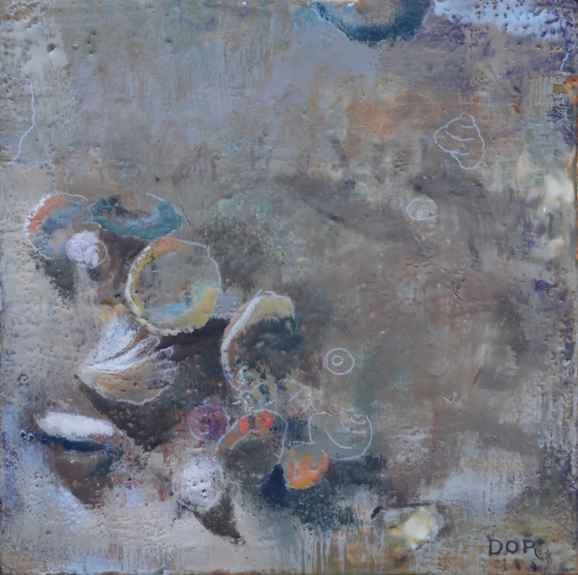
Remains Of A Wave, 7.5" x 7.5", Encaustic
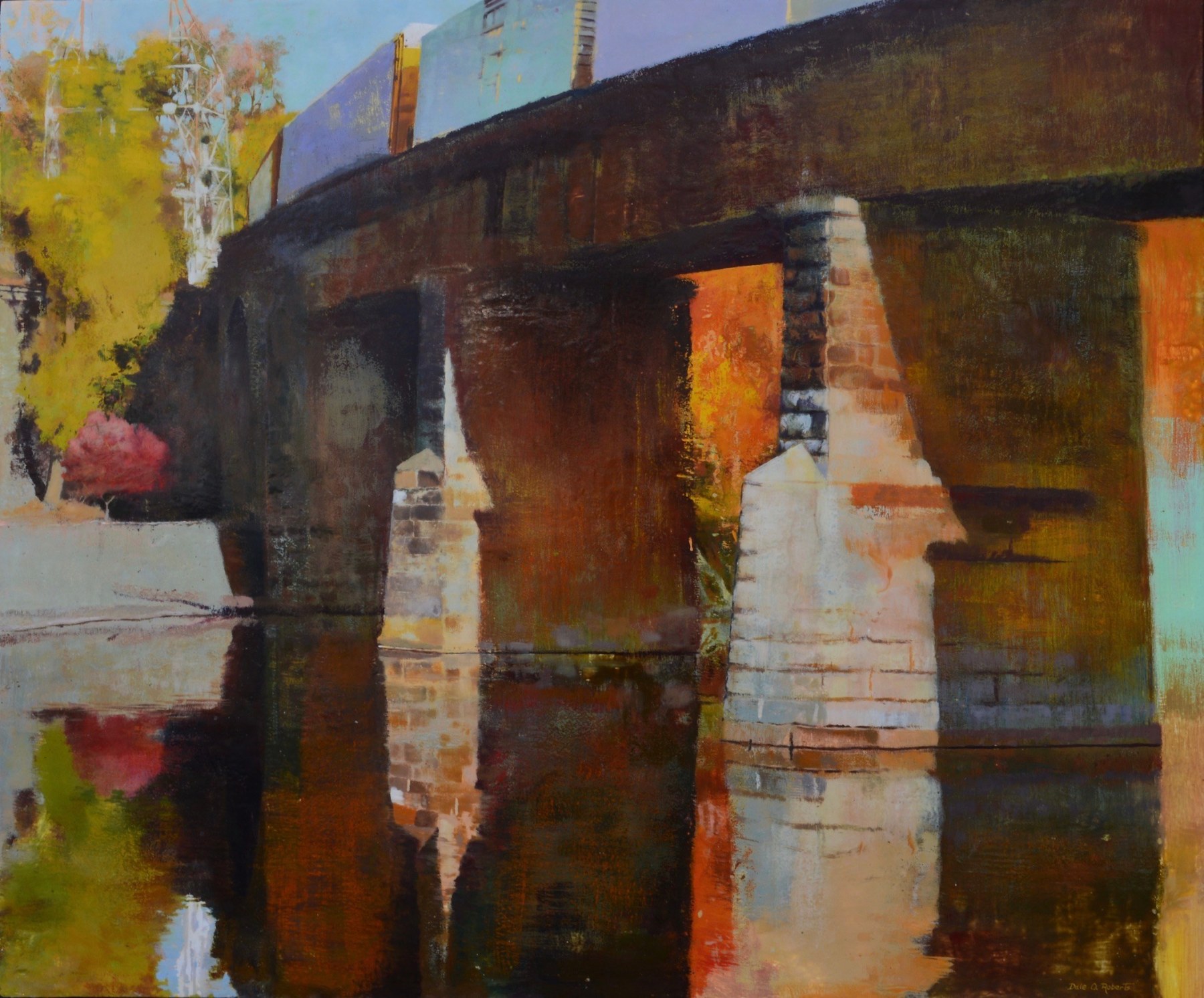
Echo, 40" x 48", Encaustic
EJ: What do you mean by “the unseen”? Is it defined by “the seen”? Are you referring to where you make the seen nebulous to suggest the unseen? Since you paint from physical reality, can you say if the unseen intersects with, emerges from, or exists behind realism?
DR: The liminal space between those worlds is a function of wordless perception and a reaction to painterly interactions that evoke an emotional or visual response. By working in layers that alternately tread the path of control and abandon, one encounters unplanned pathways. These interactions can offer a visual dialogue unobtainable through direct methods, as unplanned solutions bridge the space between the seen and unseen worlds. My visceral response might be characterized by a sense of “rightness” or “mystery” when encountering the finished work. As my former professor Roger Anliker would say, “If a painting is interesting to make, it will be interesting to look at.”
EJ: I am thinking of the drawing Shelf Life #2 and how abstractions that you “find” on the surface collaborate with what you are rendering. In Remains Of A Wave, you let seashell images exist half realized; they fade in and fade out, their white outlines are like ghosts. Are these examples of accessing the unseen?
DR: With Shelf Life #2, a visual dialogue or collaboration began with the fluid application of ink wash and casein over the Italian gesso. By working and reacting to that abstract underpinning, the drawing and the subject itself gradually emerged using the additive medium of silverpoint with subtractive methods like scraping and sanding. What emerges is a kind of afterimage, memory, or peripheral apprehension of the object and the surrounding space. Alongside the drawing made from direct observation, a kind of intangible quality of dissolution leads to unseen richness. Often the environment surrounding the objects is as meaningful as the form itself.
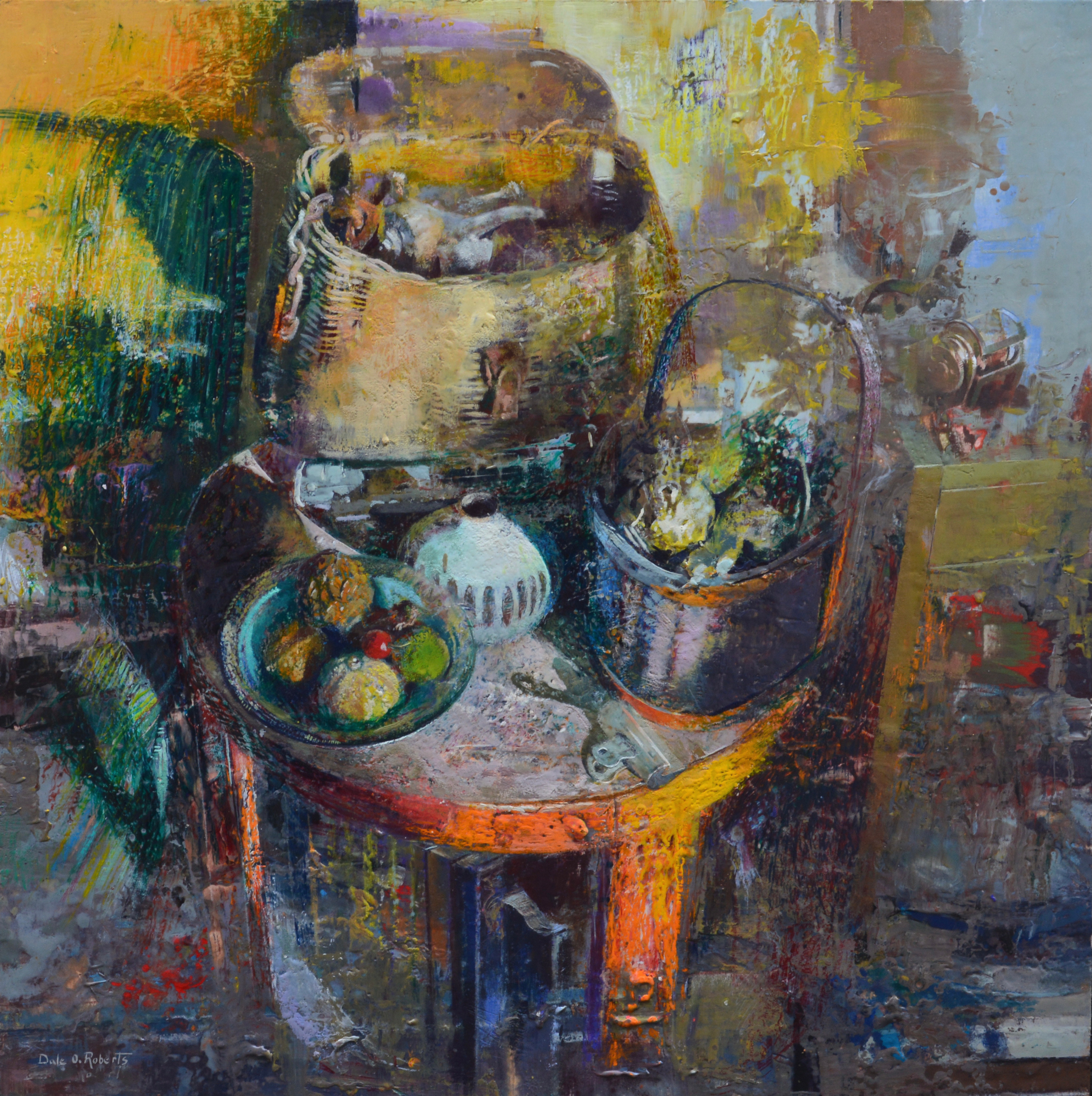
What The Light Touches, 32" x 32", Encaustic
EJ: You said earlier: “I believe creative painting is more a function of editing that which exists around us, the world in which we live and breathe.” It reminded me of this passage by Paul Hindemith from his book, A Composer’s World:
"We all know the impression of a heavy flash of lightning in the night. Within a second's time we see a broad landscape, not only in its general outlines but with every detail. Although we could never describe each single component of the picture, we feel that not even the smallest leaf of grass escapes our attention. We experience a view, immensely comprehensive and at the same time immensely detailed, that we could never have under normal daylight conditions, if our senses and nerves were not strained by the extraordinary suddenness of the event. Compositions must be conceived in the same way.”
This expresses one way that details relate to an unseen force, in his case a determination to create a dramatic composition. Do you relate to Hindemith’s superhuman comprehension?
DR: His aim in music relates to my interest that each work should have a kind of singular “voice” in order to draw the viewer into a kind of “otherworld” based on reality.
EJ: How do compositional moves and decisions come to you?
DR: The impetus for most of my work often begins with an all-encompassing idea or theme which then moves to a distillation of the subject, tonality, medium(s), and even application. The resulting process is a dance between that initial flash and the more deliberate pace of allowing the evolving work to speak to that initial idea.
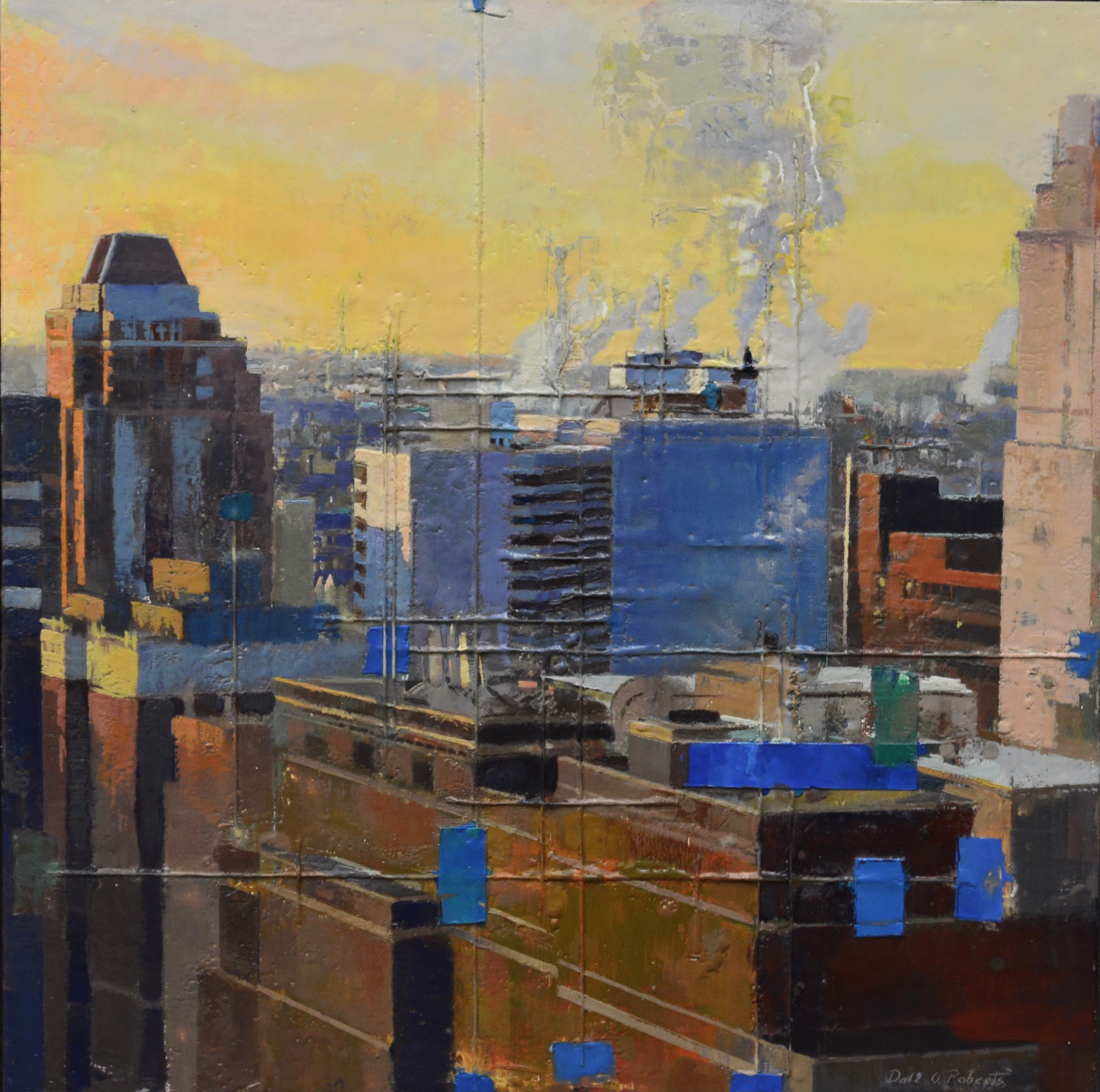
January Sunrise, 23" x 23", Encaustic
EJ: In Thornton’s video, you say that each painting has a “salient” or vital emphasis. Earlier in our conversation you said that media “should work in harmony with an interpretation of reality.” Is what you don’t do vital to suggesting the unseen?
DR: A specific instance of allowing outside influences to direct the progress of a work was part of my process when painting the St. Vitus Cathedral. While painting the areas enveloped in darkness, I listened online to the music of “official” communist composers, and my attitude and even rhythms of application were affected by the feel of the music. As I moved into the light, I played music by composers, such as Bach, who wrote music dedicated to God as an expression of their Christian faith. The “unseen” emotional currents were intensified in my sensibilities and influenced the way I was working. The shadow areas in that painting have less structure and certainty, with the result that the light areas seem more concrete by comparison. By using contrasting music to influence my emotional state, I was looking for a way to access the relationship between the seen and unseen. Leaving certain areas amorphous provides options for using the paint in novel ways to resolve the image. By not including everything I can suggest cues to involve the viewer’s imagination as I invite them to complete forms and transitions within the painting.
––Elizabeth Johnson
(elizabethjohnsonart.com)
edited by Matthew Crain